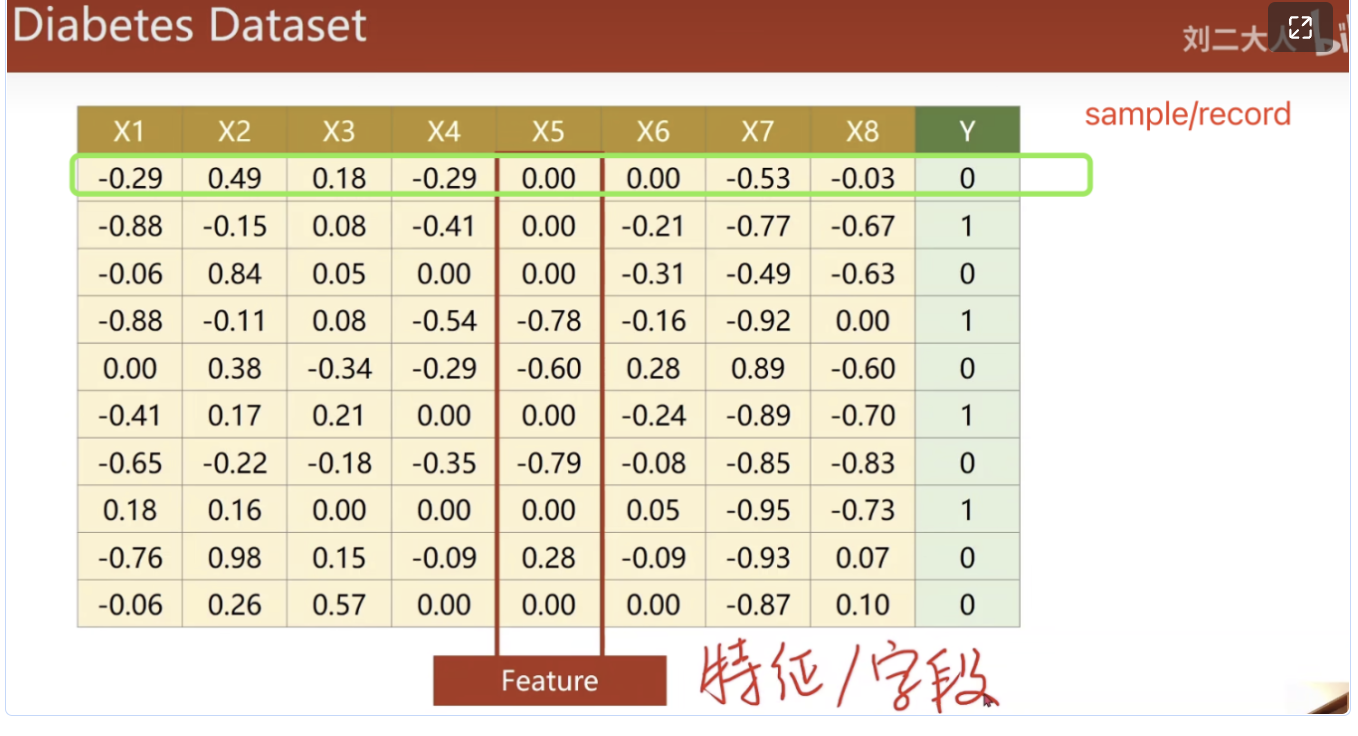1
2
3
4
5
6
7
8
9
10
11
12
13
14
15
16
17
18
19
20
21
22
23
24
25
26
27
28
29
30
31
32
33
34
35
36
37
38
39
40
41
42
43
44
45
46
47
48
49
50
51
52
53
54
55
56
57
58
|
"""
解决糖尿病预测的问题
"""
import torch
import numpy as np
# 1.读取数据
data = np.loadtxt("./data/diabetes.csv.gz", delimiter=",", dtype=np.float32)
x_data = torch.from_numpy(data[:-1, :-1]) # x不取最后一列
y_data = torch.from_numpy(data[:-1, [-1]]) # y取所有行和最后一列, [-1]代表是矩阵
# 2.设计模型
class Model(torch.nn.Module):
def __init__(self):
super(Model, self).__init__()
self.linear1 = torch.nn.Linear(8, 6) # 不断降维
self.linear2 = torch.nn.Linear(6, 4)
self.linear3 = torch.nn.Linear(4, 1)
self.sigmoid = torch.nn.Sigmoid()
self.active = torch.nn.ReLU()
def forward(self, x):
x = self.active(self.linear1(x)) # o1
x = self.active(self.linear2(x)) # o2
x = self.sigmoid(self.linear3(x)) # y heat
return x
model = Model()
# 3.构造损失和优化器
criterion = torch.nn.BCELoss(size_average=True)
optimizer = torch.optim.SGD(model.parameters(), lr=0.1)
# 4.训练
for epoch in range(1000):
# 这里forward 并非mini-batch的设计,只是mini-batch的风格
y_pred = model(x_data)
loss = criterion(y_pred, y_data)
print(epoch, loss.item())
# backward
optimizer.zero_grad()
loss.backward()
# update
optimizer.step()
# 测试集
test_data = torch.from_numpy(data[[-1], :-1])
pred_test = torch.from_numpy(data[[-1], [-1]])
print("test_pred = ", model(test_data).item())
print("infact_pred = ", pred_test.item())
|

